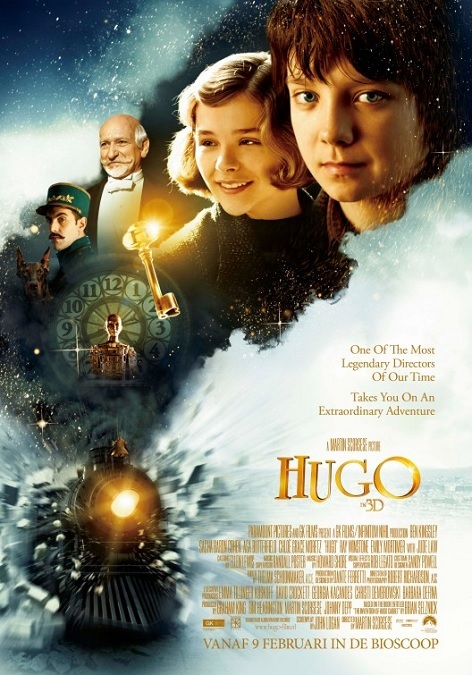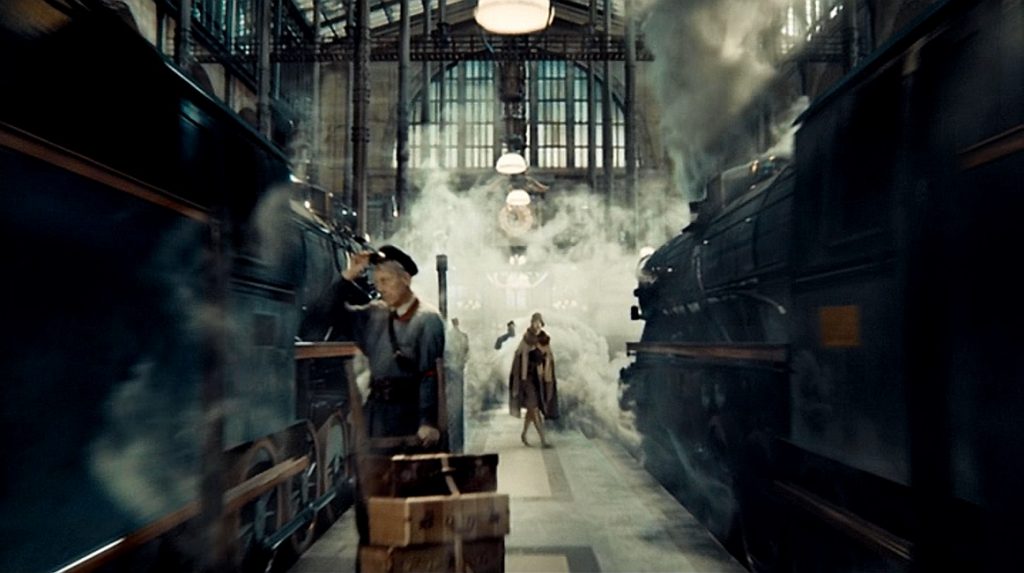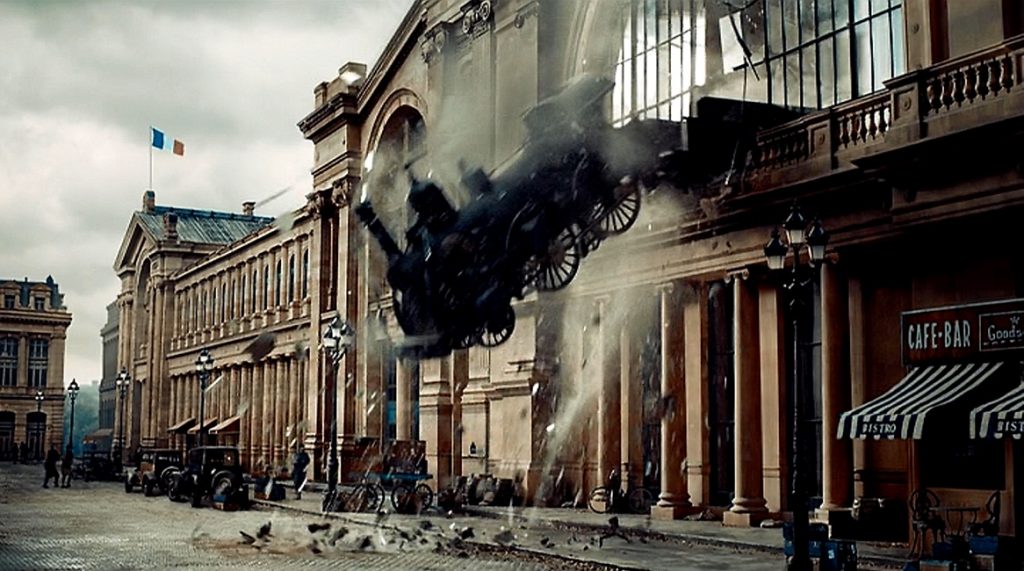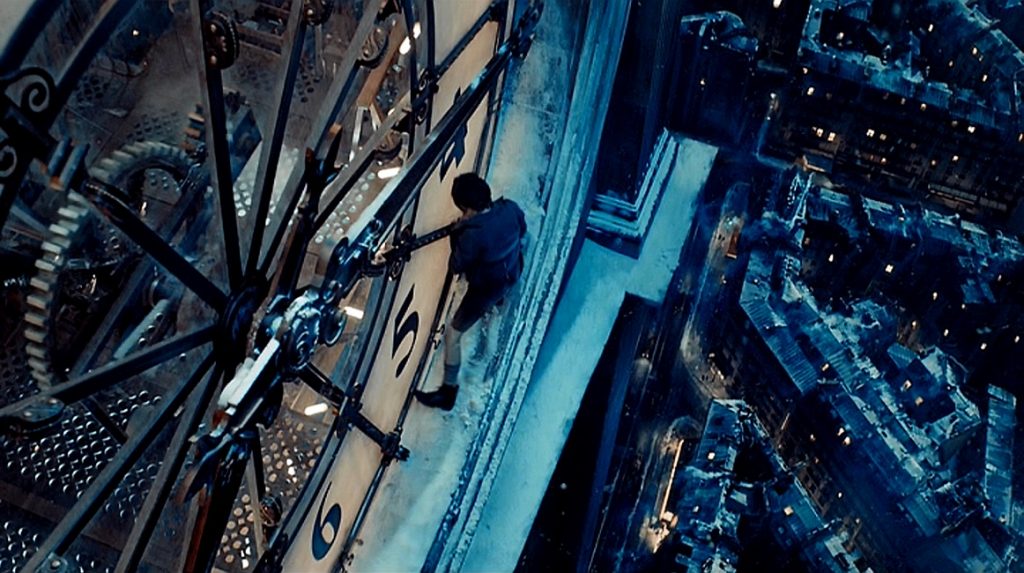



Hugo – 2011 (WINNER)

The visual effects for this Academy Award winning film were mostly of the subtle variety. The majority of them are of the sort you are not meant to notice. Of course, there were several sequences that were clearly CGI effects, but they seemed to be few and far between.
In this film, it wasn’t necessarily about the quantity of the effects, but their quality, and here, it was all about the compositing. You can start at the second shot of the movie. There is what seems to be an impossibly long crane shot that begins high in the sky above a train station, where you can also see the Eifel Tower. The camera floats down into the train yard, glides between two trains, and passes a host of individuals who are engaged in various activities. The unbroken shot continues into the main building, passing more pedestrians, shops, and kiosks. Finally, it rises up into the air and focuses on a high clock where Hugo is peering through the number 4, spying on the people.
The continuous, sweeping crane shot lasts for about 50 seconds, with only one obvious break that was cleverly covered up by a heavy gust of steam from one of the trains, right at the point where the shot moves from the train yard into the station building. The shot was pretty good, though one or two of the individually filmed people looked… separate from the CGI background.
But from what I gather, most of the interior of the train station, both in the main hall, and in Hugo’s world, inside the station’s walls, were made of small set pieces, extended with CGI environments. This is where the film’s visual effects really shine. You’d never suspect that they were not filming inside a real building. The compositing was flawless. The lighting was perfection. They did a fantastic job making the place look immense, with a feeling of grandeur. It went a long way, adding to the fairy-tale aesthetic of the story being told.
But unfortunately, that was about it. There were a few sequences in the movie that were more than superbly skilled compositing, but not much. There was the dream sequence in which a train runs off the rails, crashes through the station, and smashes through a second story window. Incidentally, I thought this miniature model effect looked a little fake, until I learned that the sequence was based on something that actually happened in the very train station depicted in the film. I found a photograph of the actual 1940 derailment, and it looked exactly like the image in the movie. And there was also a second dream sequence in which a horrified Hugo turns into an automaton, and that was pretty cool.
But other than that, the effects in this film were ones we were not meant to notice, invisible effects. And for those, I’d say they were pretty-well flawless. Did these effects deserve to win? I don’t know. Did they deserve to be nominated? Yes, they certainly did. Plus, this 3D movie was made during a time when such films were in fashion, and I think that also might have had something to do with its win.